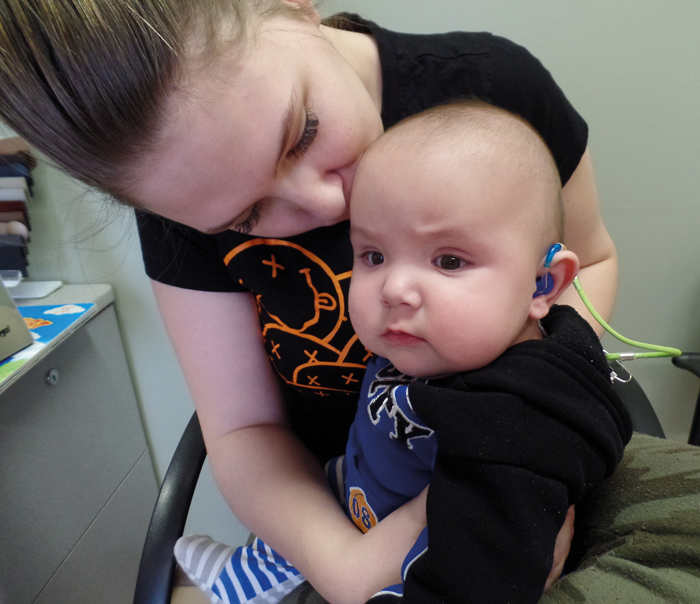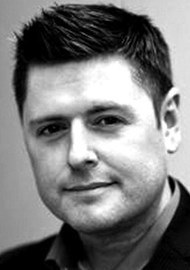Early hearing detection and intervention programmes have been implemented in many countries across the globe, but why are these programmes so important and how are our Canadian colleagues managing this process?
The consequences of being born with a permanent hearing loss that goes undetected and untreated beyond the first few months of life are long-lasting developmental and educational problems. The brain is primed to learn language even before birth, with a critical learning period that extends from birth to two years of age.
However, this natural capacity for language development depends on a large quantity of high quality speech inputs. A baby who cannot hear speech clearly will not have access to the necessary sounds to develop spoken language skills. For the one to three in 1000 infants born with permanent hearing loss, early hearing detection and intervention (EHDI) programmes have been implemented worldwide to mitigate the negative impacts of hearing loss on spoken language development. These programmes reduce the financial and emotional expense placed on caregivers and optimise the use of societal resources by identifying and managing infant hearing loss during the early months of life when the critical language-learning window is wide open.

Access to speech is provided to this infant through the consistent use of properly fitted hearing aids.
Prior to the implementation of EHDI programmes, childhood hearing loss was often detected around the age of two years, just as the language-learning window was closing. This made it difficult to catch up, placing these children at a significant long-term disadvantage, and leaving families with the responsibility of finding health professionals to explain why their child was not speaking. Well-implemented EHDI programmes result in awareness of permanent hearing loss from birth, thereby providing the opportunity to fit hearing aids in the first few months of life and ensuring that language development is not unnecessarily delayed. Recent research demonstrates that the accurate confirmation of hearing loss followed by consistent use of appropriately fitted hearing aids in infancy results in good spoken language outcomes for children born with hearing loss [1].
“Recent research demonstrates that the accurate confirmation of hearing loss followed by consistent use of appropriately fitted hearing aids in infancy results in good spoken language outcomes for children born with hearing loss.”
The components of an EHDI programme are well-described by the Joint Committee on Infant Hearing [2]. Each element is equally important and relies on the other components for successful outcomes. The first and most-commonly known step is universal newborn hearing screening (UNHS). In this initial phase, infants have their hearing screened within a few hours of birth. Infants who pass do not proceed to have a full hearing assessment, but are often monitored if they have a risk indicator for late-onset or progressive hearing loss. Infants who do not pass the UNHS phase have their hearing assessed in the second step by an audiologist trained in infant hearing testing. Since screening is not a substitute for assessment or intervention, it is important that the critical step of hearing assessment be completed shortly after the failed screening. Using electrophysiological techniques, the audiologist can fully assess an infant’s hearing during the first weeks of life. The JCIH recommends that the hearing assessment be completed by three months of age [2]. If permanent hearing loss is confirmed, appropriate medical investigations are pursued and hearing aids are fitted during the third step, when appropriate and at the family’s discretion.
The use of advanced hearing aid technology along with evidence-based paediatric hearing aid fitting protocols means that devices can be fitted appropriately to infants during the first few months of life [3, 4]. The JCIH recommends that the hearing aid fitting, along with language development and other interventions and support, be in place by six months of age [2]. These benchmarks provide guidance to EHDI programme stakeholders to target effective timelines that maximise the potential for achieving positive outcomes. Family support is a common element throughout the entire EHDI process to help the family understand the importance of follow-up and the connection between hearing and spoken language development.
Approximately 85% of infants who are identified with permanent hearing loss (PHL) fall within the mild to moderately-severe hearing loss range (25-70 dB HL) [4]. With current technology and evidence-based protocols for hearing aid fitting, infants with mild to moderately-severe permanent hearing loss will have sufficient access to speech through the consistent use of well-fitted hearing aids [4, 5]. For infants and young children who have hearing levels within the severe to profound range (71 dB HL and greater), access to speech through hearing aids may be limited, depending on the amount of residual hearing and limitations within the technology, among other factors. These children may also benefit from sign language either as a primary language and/or in addition to spoken language. Children with severe to profound hearing loss may be candidates for cochlear implants following a trial period with hearing aids. Regardless of the technology or language modality, early identification and intervention are known to be vital to the success of infants born with permanent hearing loss. Positive outcomes for children with hearing loss have a better chance of being realised when all of the components of an EHDI programme are in place.
“The CIHTF’s position is that all children in Canada deserve access to proper hearing screening, diagnosis and timely intervention to reach their full potential.”
The Canadian Infant Hearing Task Force (CIHTF) is a national group of leaders and experts in matters related to EHDI, formed to promote, support and advocate for comprehensive universal EHDI programmes in all Canadian provinces and territories, and is a collaboration between the Canadian Academy of Audiology (CAA) and Speech-Language and Audiology Canada (SAC). The CIHTF’s position is that all children in Canada deserve access to proper hearing screening, diagnosis and timely intervention to reach their full potential. To that end, the CIHTF began by clarifying the state of EHDI among all provinces and territories in Canada. This was accomplished by publishing an initial report in 2014 followed by an update in 2016 that assessed each component of an EHDI programme for all 13 provinces and territories. Of these, only five demonstrated either excellent or good EHDI programmes.
The reports have generated some acknowledgement from various levels of government, which resulted in media attention and face-to-face meetings with members of government. The goal of the CIHTF is to promote the need for high quality EHDI programmes across Canada, so that no matter where an infant is born in the country, he/she will have access to appropriate hearing healthcare as early as possible. This will mitigate the cost to the child, family and society by identifying and providing intervention during the critical period of optimal language development. It is imperative that this action be taken worldwide so that all babies born with hearing loss have the best opportunity to develop language and to maximise opportunities for successful cognitive, communicative and social development.
References
1. Tomblin JB, Walker E, McCreery R, et al. Outcomes of children with hearing loss: Data collection and methods. Ear & Hearing 2015;36:14S-23S.
2. Joint Committee on Infant Hearing. Year 2007 Position Statement: Principles and Guidelines for Early Hearing Detection and Intervention Programs. Pediatrics 2007;120(4):898-921.
3. American Academy of Audiology. American Academy of Audiology Clinical Practice Guidelines on Pediatric Amplification. 2013; Available from
http://www.audiology.org/resources/documentlibrary/
Documents/PediatricAmplificationGuidelines.pdf
4. Bagatto M, Moodie S, Brown C, et al. Prescribing and verifying hearing aids applying the American Academy of Audiology Pediatric Amplification Guideline: Protocols and outcomes from the Ontario Infant Hearing Program. Journal of the American Academy of Audiology 2016;27(3):188-203.
5. Moodie S, Network of Pediatric Audiologists of Canada, Scollie S, Bagatto M, Keene K. Fit-to-Targets for the Desired Sensation Level Version 5.0a hearing aid prescription method for children. American Journal of Audiology 2017;25:1-8.
Declaration of Competing Interests: None declared.






